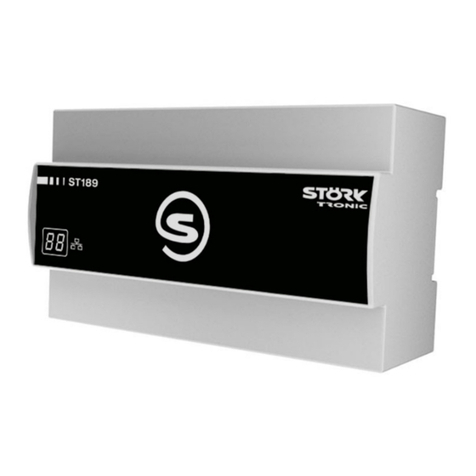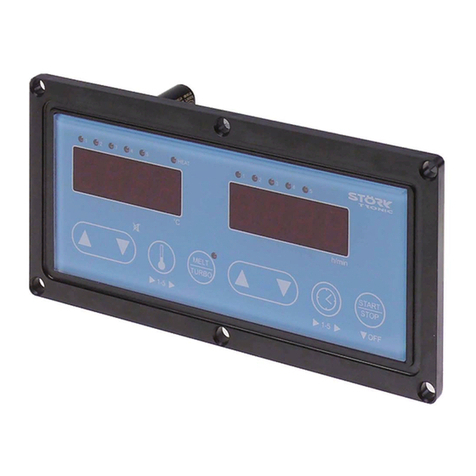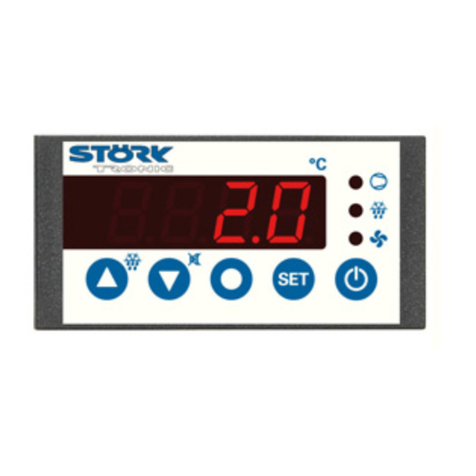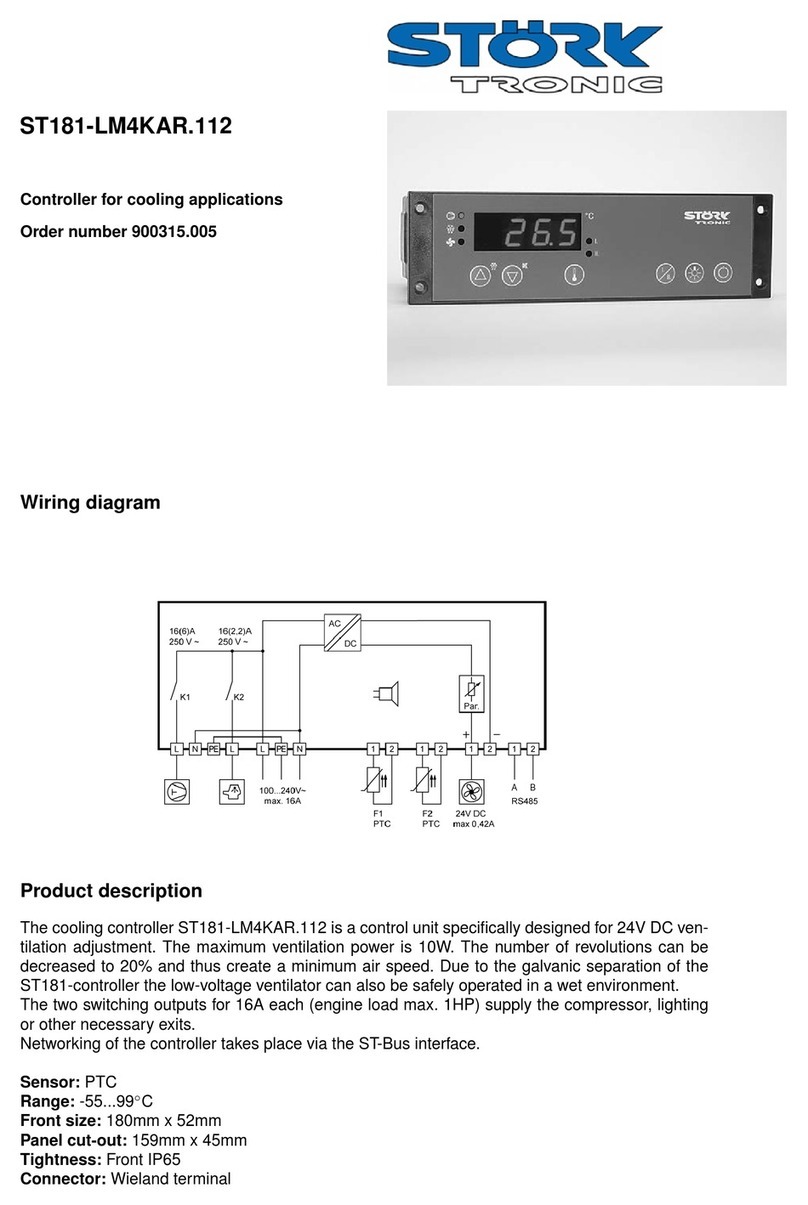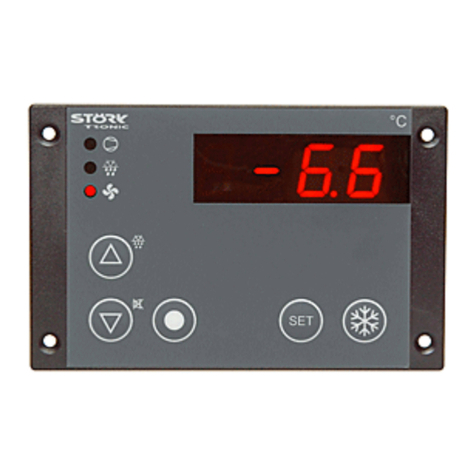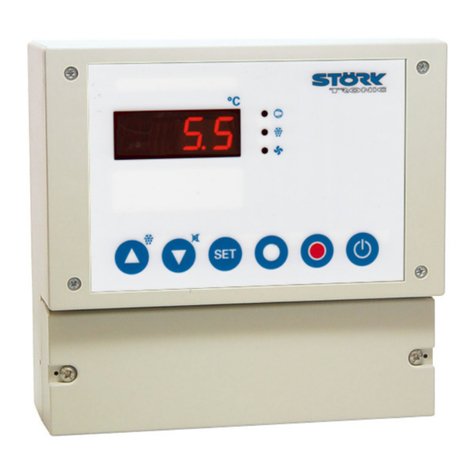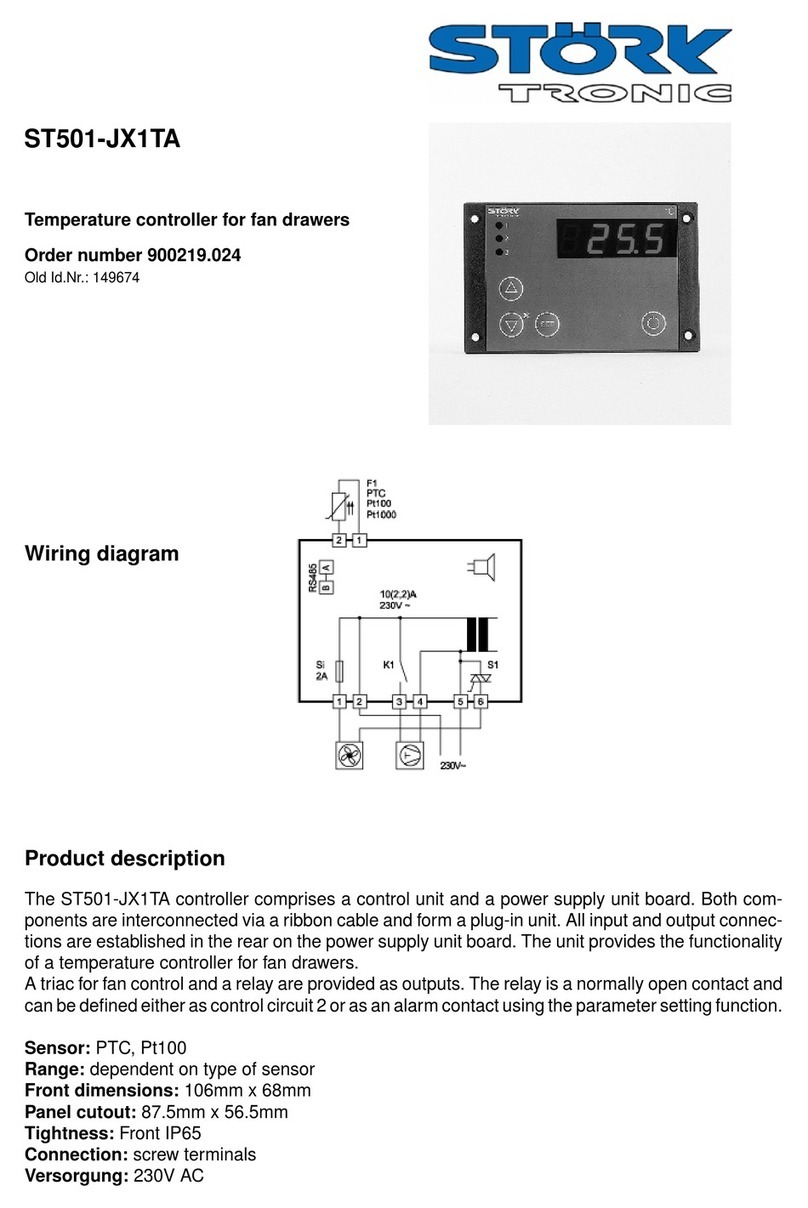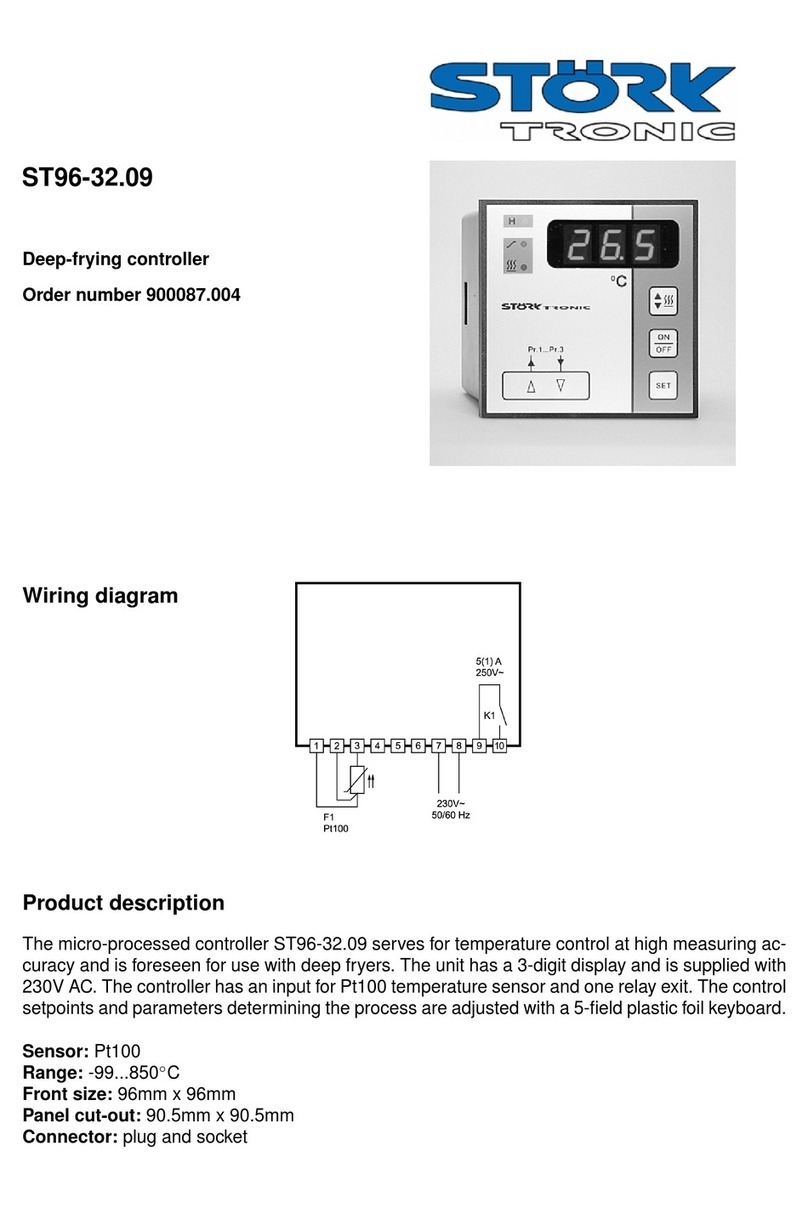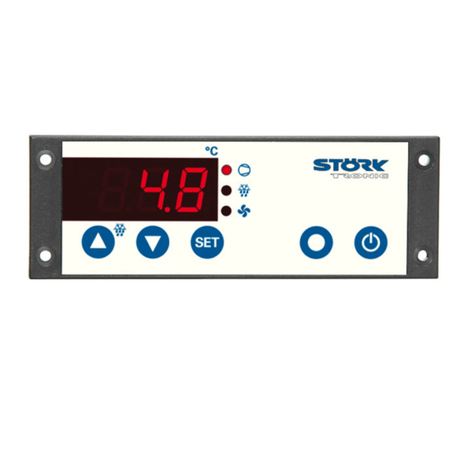
P9: Lead time Tv (Differential-portion)
The differential portion dampens temperature changes. If a long lead time Tv is set, damping is
strong. At too long lead time, however, the system may tend to vibrate. At setting 0 the values are
ineffective. It is therefore possible to realise a pure PI or PD regulation.
P10: Cycle time Tp
The cycle time is the time, in which the control output runs through one switching period, i.e. once
switched out and once switched on. The smaller the cycle time, the faster the regulation. By
consequence, however, there is also an increased switching frequency of the exit, which can lead
to rapid wear of relay contacts. For very fast control ways with the respective high switching
frequency a voltage output is therefore of advantage.
P19: Key-lock
The key-lock allows blocking of the control keys. In locked condition parameter adjustments with
keys is not possible. At the attempt to adjust the parameters despite key-lock the message "==="
appears in the display.
P20: Actual value sensor F1
The here indicated temperature presents the sum of actual measured value of sensor F1 and the
actual value correction according to parameter P21.
P21: Actual value correction
This parameter allows the correction of actual value deviations caused for example by sensor
tolerances or extremely long sensor lines. The regulation measure value is increased or decreased
by the here adjusted value.
P25: Temperature limit for fat operating time
Above this temperature the internal recording of fat operating time is started. If the values of P26
and P27 are exceeded the alarm message and/or regulation blocking is activated.
P26: Fat operating time until fat alarm message
After this time period an alarm message requests the exchange of the deep-frying fat. The display
indicates flashing “OIL”. With P26=0 this function is deactivated and no alarm message occurs.
Regulation blocking is still possible. The alarm message appears each time the operating time limit
is reached and with every “mains-on” or “standby-on”, it can be cancelled with the DOWN key.
A reset afer an alarm message and cooled down deep-fryer is possible as well.
Then the fat is to be changed as the accumulated operating time is deleted.
P27: Fat operating time until regulation blocking
After this time period an regulation blocking requests the exchange of the deep-frying fat. A reset
with coold down deep-fryer has to be carried out to release the blocking and delete the operating
time. With P27=0 this function is deactivated and no blocking occurs. Fat alarm message is still
possible. With P26=0 and P27=0 no operating time recording takes place.
P28: Indication of fat operating time
The operating hours counter determines the actual operating time of the fat. The time couter runs if
the fat temperature is above the value of P25 (only full hours are couted). By pressing the SET key
the actual operating time is indicated. The operating time counter can be set to Zero by a reset
(pressing the MELT/TURBO key together with the START/STOP key for 10 seconds).
